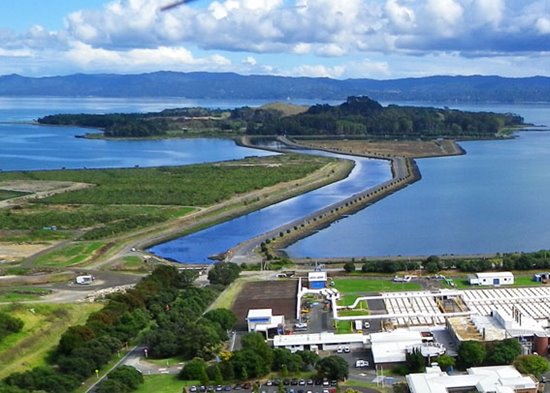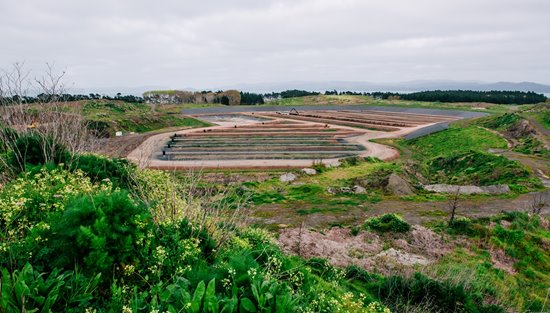The Puketutu story
Puketutu Island – known as Te Motu a Hiaroa to Mana Whenua – is sacred to the people of Te Kawerau ā Maki, Te Waiohua and Waikato-Tainui. It was the first permanent home of the crew of the Tainui waka in Aotearoa.
In the 1950s, the island was quarried for projects including the expansion of the nearby Auckland Airport. Thousands of tonnes of scoria and basalt rock were removed and the island’s volcanic cones disappeared.
Many years ago Watercare bought a long-term lease on the island and then transferred its ownership to a trust with 12 iwi trustees.
We are now rehabilitating the island by filling the former quarry with biosolids from the Mangere Wastewater Treatment Plant.
At the end of the project – not until 2049 – four small hills will be created to replicate the scoria cones that were quarried in the 1950s.

An aerial view of Puketutu Island.
The benefits of this project:
-
We use less fuel in disposing of biosolids
-
It is a more cost-effective solution
-
It reduces truck movements for our treatment plant neighbours
-
It will restore a culturally-significant site to its former state
-
The long term goal is for the island to serve as a recreational reserve for everyone in Auckland to enjoy
What’s happening on site?
At our Mangere Wastewater Treatment Plant, we produce about 330 tonnes of treated biosolids a day. Instead of sending this to landfill, we truck it to neighbouring Puketutu Island.
The biosolids are tipped into pre-constructed cells in the former quarry, and covered over with earth at the end of each day.

Work under way at Puketutu Island.
Watch: How we treat our wastewater